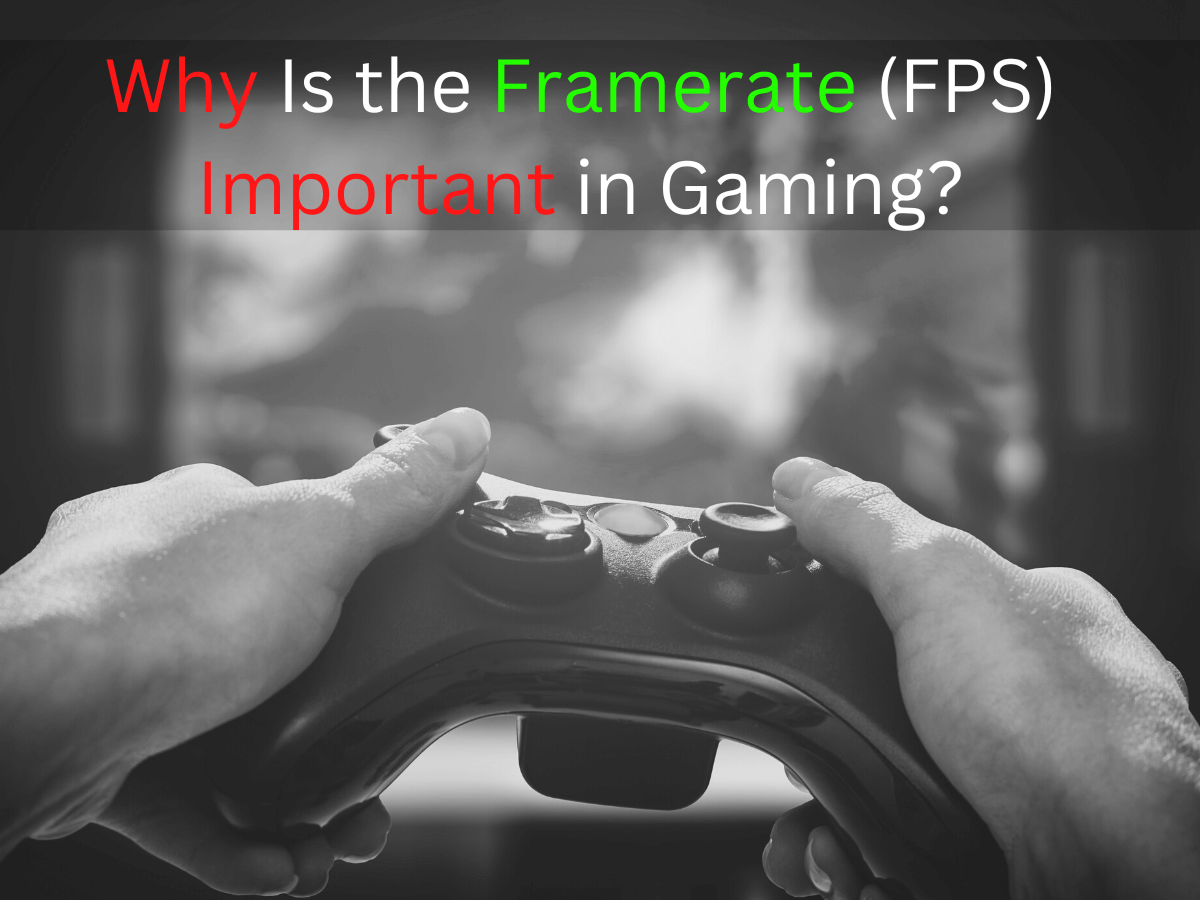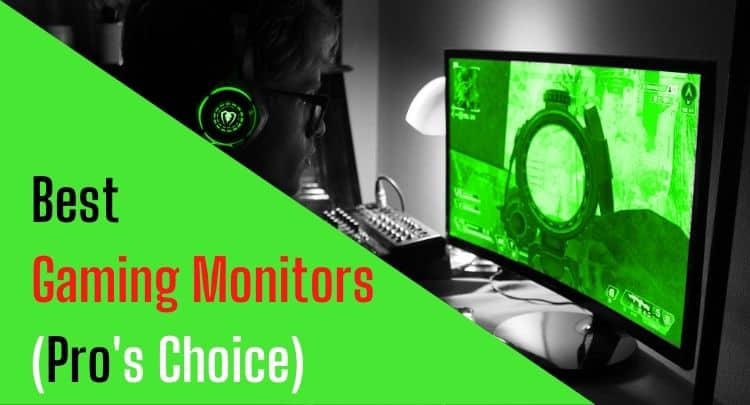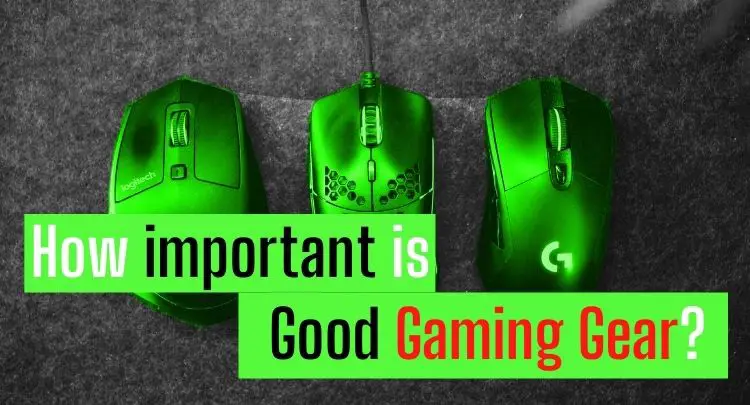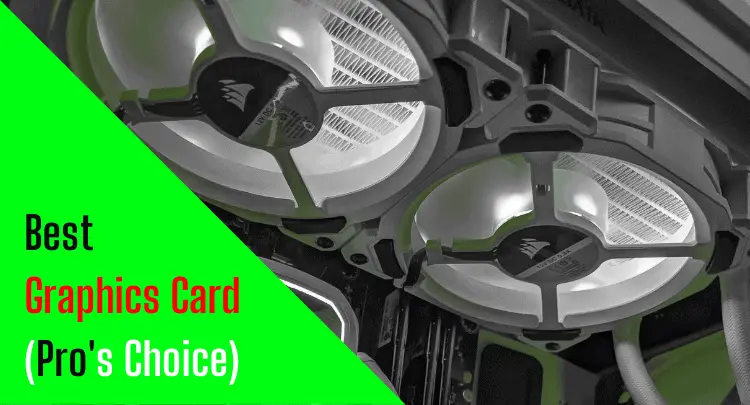Even as a casual gamer, I get annoyed with little jerks in the game that affect aiming. I have spent countless hours tuning my computer to increase the frame rate. However, for Masakari and other competitive gamers, the effects of stuttering and FPS drops are much worse. Framerate drops have a decided impact on your performance in the game.
This post shows why you should pay attention to your FPS rate and why more Hz on your monitor’s frame rate makes sense.
In general, a higher rate of frames per second (FPS) is beneficial for gaming. More perceived FPS helps the brain to recognize movement and to predict changes faster and more accurately. These advantages have a positive impact on reaction speed and the accuracy of hand-eye coordination.
All pro gamers (including Masakari) have a 240 Hz monitor or at least one with 144 Hz and try to squeeze as many FPS (Frames per Second) out of their systems. So why the hell are they doing that?
First of all, you want to rule out the possibility that your opponents have a technical advantage.
However, when perceiving FPS, it’s not only the technical requirements of your equipment that count but also your physical prerequisites.
More about that later.

- Which Games Require Higher FPS?
- What Does the Perception of Higher FPS Depend on?
- How Can I Find and Train my own FPS Perception Limit?
- How Can I Achieve a Higher FPS with my Old System?
- Which Technical Components Affect the Frame Rate?
- Conclusion
- Related Posts to the topics “Gaming Gear” & “Graphics Card“
Note: This article was written in English. Translations into other languages may not provide the same linguistic quality. We apologize for grammatical and semantic errors.
Which Games Require Higher FPS?
Do you like playing card games like Hearthstone or Magic the Gathering Arena? Do you often play strategy games like League of Legends, Age of Empires, or the Anno series? Or how about a juicy adventure game? Then skip the following text – more FPS won’t get you anywhere.
Frames per second (FPS) is a measurement unit for the frame rate, which your system can technically deliver, including the display device (monitor). For the genres mentioned above, 30-60 FPS are entirely sufficient. But if you play games with fast movements – especially if you move your player character – more FPS will make a huge difference. Of course, we are talking about 3D shooters like Doom, Call of Duty, Battlefield, PUBG, CS:GO, Overwatch, Valorant, etc.
Wherever you quickly change your view of the game with mouse movements, your brain must perform at its best. Millions of pixels change every second. Nevertheless, you have to see whether an opponent is lurking or moving somewhere with an accuracy of up to one pixel.
We certainly acquired this ability as hunters & gatherers, where any carelessness in hunting could mean certain death or where an overlooked prey made the stomach growl further. Although the human eye is far inferior to an eagle’s eye, it can still detect changes in the field of vision amazingly quickly.
First-person shooters require experience, a certain sense of timing, and situations, but above all, two things:
- Recognizing opponents
- Hit an opponent
The two are related. Sure they are. What I can’t see, I can’t hit. If the image – and with it millions of pixels – changes, then your eye has a hard time perceiving these changes. The movement “blurs,” and the graphic becomes blurred. The higher the displayed FPS number, the more sharp images your eye can see.
You can find a small illustrative example on this page, where 15 FPS, 30 FPS, and 60 FPS are held against each other https://www.testufo.com/.
With each increase in FPS, the picture appears more fluid, sharper, and, above all, less “jerky.” And this is crucial for your imaging. Whether you can get the crosshair precisely to the point you have chosen (i.e., usually the head of your opponent) depends on a few training factors and one thing above all: hand-eye coordination.
What happens in a few hundred milliseconds
- You perceive an opponent
- Your brain calculates the distance between crosshair and target point
- Your brain sends an impulse to all relevant muscles to move the mouse to the correct position
- Your muscles react
- Your eyes give your brain feedback on whether the crosshair is correctly on course.
- Your brain continually calculates whether corrections are necessary and sends the appropriate impulses.
- Your brain calculates the optimal time for a shot – at the same time, the mouse movement is calculated and corrected with pulses to your arm and hand if necessary.
- Your brain sends an impulse to your finger in time to trigger the shot
- You press the mouse button milliseconds later and fire.
So much for the theory. In practice, it cracks in many places. For one thing, you first have to perceive the opponent. You can easily overlook an opponent if the picture becomes “blurred” by a fast movement and too little FPS.
Once you have focused on your opponent and your brain has gotten going, the most crucial process is the ongoing recalculation of the crosshair’s distance to the target. The brain is calculating something incredibly complex. The target moves, you may move with your character, the crosshair moves, your muscles push your arm and hand, and a shot’s timing must also be taken into account.
Wow, right? That’s also why e-sports are a real sport. In the Olympic clay-pigeon shooting, the athletes do nothing else.
Wouldn’t it be silly if something disturbed this complex calculation right?
A massive disturbance would be, e.g., an “FPS drop,” i.e., a fluctuation of the frame rate. If your system shows more FPS than you can perceive and stays above this limit, you will not notice anything. However, if the fluctuation is within your perception range, you will see the variation consciously or unconsciously. The FPS drop directly influences the calculation process of your brain. The result is a negative impact on your hand-eye coordination. For Pro Player, this is, of course, a no-go.
A higher frame rate up to your perception limit makes sense to provide the brain with even better information, i.e., sharper and more fluid image material. The brain can then carry out the calculations much more accurately, ultimately making you hit more often.
Let me put it a little differently: Computer games try to depict reality. But in reality, there is no FPS. Everything that your eyes see right now has no interruptions. Millions of nerve cells do not get what you see as photos, but the light hits the nerve cells continuously. Fluctuations in intensity and light frequency determine the structures and colors that arrive in our brains and are processed.
Conversely, this means that computer games basically provide us with a flipbook and thus try to “simulate” a continuous flow of images as well as possible. You can find a short example of a flipbook here:
Logically, a higher FPS number will, therefore, continue to approach a state that the eye is used to. If you think “cool now,” I can boost my system to 500 FPS, and I will see digital as well as analog. Nope, you have a specific FPS perception limit right now. If your FPS is above that, it doesn’t help you much right now, but it trains your eyes for the future.
Honest recommendation: You have the skill, but your mouse doesn't support your aiming perfectly? Never struggle with your mouse grip again. Masakari and most pros rely on the Logitech G Pro X Superlight. See for yourself with this honest review written by Masakari or check out the technical details on Amazon right now. A gaming mouse that fits you makes a significant difference!
What Does the Perception of Higher FPS Depend on?
As a regular casual gamer who plays shooters from time to time, you already have a slight advantage over a non-gamer. You are used to quick movements at 60 FPS. So you have already greatly improved your FPS perception limit. You are probably able to perceive up to 150 FPS in the best case.
Whether you succeed in this, however, depends on several physical and psychological factors:
- The light intensity of the image you are viewing influences the speed at which your eyes transmit a light impulse to your brain. Bright light impulses are transmitted much faster than dark light impulses. This is probably why many Pro Players turn up the gamma and brightness values in the graphics card settings or on the monitor.
- Your current fatigue is also affecting you. As in our other article, ‘Do Energy Drinks Help with Gaming? [Boost Myth Uncovered’, you have a ‘slowed down’ nervous system as soon as tiredness is in play. Since visual perception is via the optic nerve, exhaustion can push your FPS perception limit down significantly. I think you’ve experienced this before, that when you’re tired, your aiming sucks. Ultimately, this is proof that your hand-eye coordination is negatively affected. Easy fix: Sleep 🙂
- Of course, the maximum perception is strongly determined by the concentration and focus on a particular thing. So if you are mentally in chaos, this also reduces your FPS perception limit. Have you ever tried meditation?
- Training, training, training. The longer one has to cope with a higher frame rate, the more the eye gets used to the number of FPS. Like a muscle, other nerve cells are built up and thus allow the perception of more and more FPS.
Let’s make some comparisons based on the current state of research:
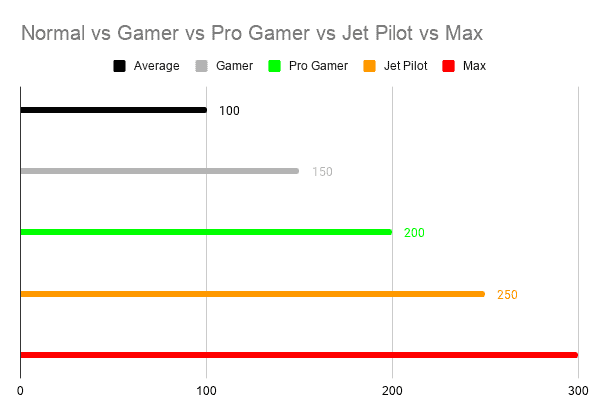
As already mentioned actually, every ordinary person can perceive up to 100 FPS (black). A casual gamer (grey) could achieve better results with a 144 Hz monitor – of course, only if his system can handle 144 FPS. Pro gamers (green) are on a level where a 240 Hz monitor can achieve better results. Of course, the jump from 60 Hz to 144 Hz or FPS is much higher in perception than from 144 FPS to 240 FPS.
So far, only U.S. Air Force pilots, who perceived 220 FPS during tests (orange), have proven to have topped this.
How Can I Find and Train my own FPS Perception Limit?
Unfortunately, there is no test that you could do at home. However, since all monitors today run at least 60 Hz, you can find tests that can give you an idea of the change in perception for 30 vs. 60 FPS.
With medical tests, like those used by U.S. Air Force jet pilots, you could prove how many FPS you can see at most concerning shooter games – but no one will test you. Okay, with enough money and the right doctor…well.
So, what to do?
Assume that you can reach a maximum of 250 FPS through training and that you usually have a current perception limit somewhere between 100-150 FPS. If you now raise your system to a constant 150 FPS, you have already gained a lot. In the long run, however, you want to shift your perception limit towards 250 FPS. So you have to challenge your eyes more and get them used to more FPS. Unfortunately, you won’t avoid the purchase or upgrade of a system + monitor with 240 Hz.
But you can then test very quickly whether you have already gotten used to a higher frame rate. Play with maximum FPS for a while and then switch to 10% less FPS. If you feel a difference, then your perception limit is higher. If you don’t feel a difference, your maximum is probably reached (if you were mentally fit while testing).
Does more than 300 FPS Make Sense?
No. It is currently not proven, but probably no one will notice a difference above 250 FPS. Even if your graphics card could deliver more frames per second, save energy and give your card a longer life. Limit the FPS in-game or by tools (e.g., Afterburner/Rivatuner) to a maximum of 240 – 250 FPS. Other reasons why it can be useful to limit your FPS can be found in our article “FPS Cap in Shooter Games”.
How Can I Achieve a Higher FPS with my Old System?
If you have an old dinosaur as a PC and want to win a few FPS, try these tips:
- Reduce the resolution. Halving the resolution results in 40-50% more FPS – of course, the graphics card only has to calculate half the pixels. But since FPS is not only related to the graphics card, the boost can be much lower. And, of course, the graphics deteriorate in general.
- Update your graphics card drivers to the latest version. A graphics card manufacturer may incorporate changes for older chipsets into the latest drivers even after months or years. If you are lucky, this can bring more power.
- Turn off all graphical improvements – yes – all. This includes post-processing, anti-aliasing, shadows, and any other beautiful things the game offers you. Pro gamers mostly play without these graphic settings to get the most out of FPS. The game graphics won’t get any prettier, but you will undoubtedly have more FPS. Another positive effect is that you will be able to spot enemies much easier.
- Purify your system in the background. Windows runs many background services that nobody needs or even has a counterproductive effect on your system performance. Some of them put a strain on the hard disk, others on the network card or the CPU. If you have a bottleneck with one of these components, a little tidying up might give you more FPS.
- Overclocking. Caution, this tip can damage your hardware if misused. There are many guides on the subject, so find one for your video card and get a few percent more performance out of it. If you find the right balance, this may not necessarily affect the life of your graphics card or system stability.
Which Technical Components Affect the Frame Rate?
That depends a little bit on the engine used in the game. Take PlayerUnknown’s Battleground (PUBG), for example. A huge world with many objects and enemies is managed in RAM.
Larger textures are reloaded repeatedly depending on your player model’s velocity (and the graphic settings). The frame rate is influenced by whether the textures are available on time. No textures, no finished frame.
So here, besides a good graphics card, a fast hard disk, a good CPU, one thing is most important: Fast RAM. In a game like CSGO, the bottleneck is undoubtedly more in the direction of the interaction between CPU and graphics card.
So if you have a great graphics card and your FPS is very low compared to other systems with the graphics card, you should check the other components. There are tests on the Internet that will evaluate your PC, such as https://www.userbenchmark.com/.
However, for a more detailed analysis, you will need a local check on your system. In addition, you will need specialized tools and the know-how to interpret the test results.
Conclusion
If you play games that do not require 3D graphics, then this question should not concern you.
But you are probably interested in this topic because you play games like CSGO, PUBG, Overwatch, Fortnite, Valorant, or other 3D first-person shooters with fast movements.
Pro gamers who make a living in this genre all have at least a 144Hz monitor and systems that can handle at least 144 FPS to be competitive.
Through daily training, their eyes are trained to a higher frame rate.
A higher FPS perception brings advantages in object recognition while moving and in hand-eye coordination.
As a result, the game “feels” slower and more controllable. In addition, aiming becomes more accurate because the brain receives “better” data and can “calculate” more accurately.
If you want to know more about how exactly FPS drops can affect your aiming, then this article might be for you.
But every person has an individual maximum limit for FPS, which cannot be increased infinitely even by training. Science currently assumes that humans cannot perceive more than a maximum of 300 FPS as a complete picture.
However, the nerve cells are designed for up to 1000 pulses per second. Therefore, if you concentrated on one point in the image, perception at up to 1000 FPS would be possible. Still, as we always focus on the complete screen, these values are not reachable for gamers.
Most untrained people should feel a positive effect of up to 100 FPS. Raising your FPS to 100 and getting a 144Hz monitor can make you a better gamer in no time with a bit of adjustment.
For trained people whose maximum FPS value is between 100 and 250 FPS, the difference to 60 FPS naturally has a much more significant impact.
So we can only recommend you to train your perception in terms of FPS actively to get on the same level as Pro Players.
But, of course, we’re only talking about advantages in the range of millisecond reaction time, opponent detection, or a little bit improved aiming.
Still, in the world of e-sports, these small advantages decide about victory or defeat. Or in other words, about careers and a lot of money.
The prerequisite is, of course, that your system can handle a higher frame rate at all. We have shown you how to get a few more FPS out of your box with simple means or which components would have to be exchanged to achieve more FPS.
Related Posts to the topics “Gaming Gear” & “Graphics Card“
If you have a question about the post or pro gaming in general, write to us: contact@raiseyourskillz.com.
If you want to get more exciting information about becoming a Pro Gamer and what relates to Pro Gaming, subscribe to our newsletter here.
GL & HF! Flashback out.

